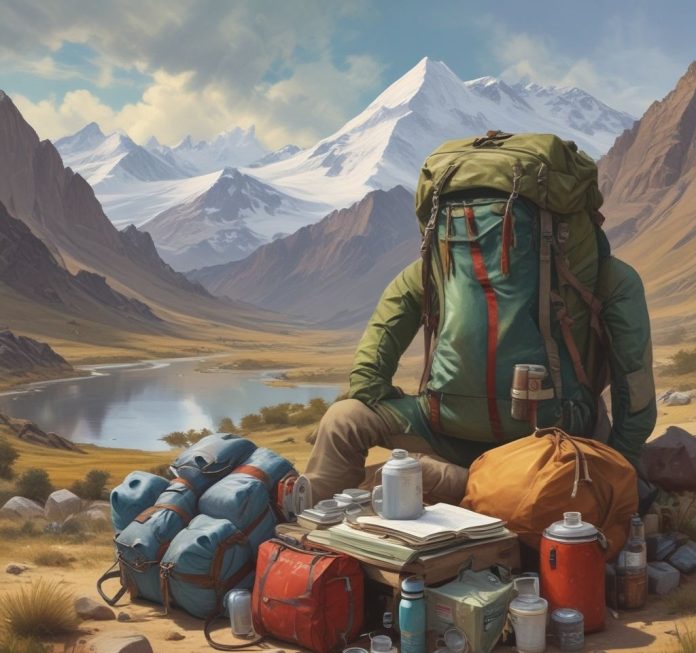If you’re planning to trek in Nepal—especially high-altitude routes like Everest Base Camp (EBC), Annapurna Circuit, or the Three Passes—you’ve probably been told you must bring a sleeping bag. But that advice alone opens a dozen more questions: How warm should it be? Do I need one if I’m staying in teahouses? Should I rent or buy? What about spring vs. winter?
Let’s walk you through what kind of sleeping bag you actually need, depending on the season, your route, and how easily you feel cold.
Do You Really Need a Sleeping Bag in Nepal?
Short answer: Yes, for most treks. Even when you’re staying in teahouses, having your own sleeping bag ensures warmth, cleanliness, and comfort.
But! There are caveats:
-
In lower elevations or during warmer months (April–May, September–early November), some trekkers get by with just blankets provided by teahouses and a sleeping bag liner.
-
However, above 3,500 meters—especially places like Dingboche, Lobuche, and Gorak Shep on the EBC trek—it gets seriously cold at night. Temperatures can drop to -10°C or even lower indoors.
Temperature Ratings: What’s “Comfort,” “Limit,” and “Extreme”?
When shopping or renting a sleeping bag, you’ll see three ratings:
-
Comfort: The lowest temperature at which a “cold sleeper” (often women or thinner individuals) will sleep comfortably.
-
Limit: The lowest temperature a “warm sleeper” (often male or people with more body fat) can handle.
-
Extreme: Survival-only range. Avoid relying on this.
So, if you sleep cold, use the comfort rating to guide you.
Recommendations by Season
🔆 Spring (March–May)
-
Temperatures: 10°C to -10°C (at night in higher altitudes)
-
Recommended Rating: Comfort to -10°C or lower
-
Ideal Bag: A 3- to 4-season down sleeping bag, preferably with a hood and draft collar.
-
Teahouse Warmth? Yes, but bring your bag. Blankets are provided, but not always clean or warm enough.
🌞 Summer/Monsoon (June–August)
-
Temperatures: Mild (rarely below freezing at night)
-
Recommended Rating: 0°C comfort bag or even just a liner with teahouse blankets.
-
Note: This isn’t peak trekking season due to heavy rain and leeches, but it’s warmest.
🍂 Autumn (September–November)
-
Temperatures: Similar to spring, but drier and often chillier at night
-
Recommended Rating: Comfort to -10°C; -15°C for higher altitudes
-
Bonus Tip: As the season gets closer to winter (late Nov), nights get very cold.
❄️ Winter (December–February)
-
Temperatures: Can dip to -15°C to -25°C at night (especially above 4,000m)
-
Recommended Rating: Comfort to -20°C or lower
-
Ideal Bag: 4-season or expedition-grade down sleeping bag, ideally 1.2–1.5 kg with down fill power over 700.
Should You Buy or Rent?
✅ Buy If:
-
You trek often or have more high-altitude treks planned (EBC, K2 base camp, Kilimanjaro, etc.)
-
You want to guarantee quality, cleanliness, and warmth.
-
You’re a cold sleeper and can’t take chances with rental gear.
💰 Rent If:
-
You’re budget-conscious and don’t plan to trek again soon.
-
You’re already carrying a lot and want to rent gear closer to the trail.
Rental Cost (as of 2024):
-
Kathmandu (Thamel): NPR 150–250 per night (~$1.50–$2)
-
Namche Bazaar: NPR 400–500 per night (~$3–$4); deposit up to NPR 20,000
-
Brands: Mostly local or knockoff versions, but you can find solid, warm bags with careful inspection.
Key Buying Tips
-
Fill: Go for down if possible—it’s lighter and warmer. Synthetic is bulkier but cheaper and better in wet conditions.
-
Weight: Look for bags under 1.5 kg if you’re carrying your own.
-
Brands: Rab, Sea to Summit, The North Face, Mountain Hardwear, Marmot. If buying in Kathmandu, test the zipper and inspect the stitching.
-
Shape: Mummy shape offers best warmth-to-weight ratio.
What If You Don’t Use It?
Some trekkers report not using their sleeping bag at all, especially during mild spring or autumn treks. But others say they couldn’t have survived the cold nights above Tengboche without it.
If you’re trekking as a couple, some share a sleeping bag or double up on blankets.
And remember: a good liner + teahouse blanket ≠ guaranteed warmth. It’s a gamble unless you know you’re a warm sleeper.
Other Pro Tips
-
Liner: Always bring a silk or fleece liner. Adds 5–10°C warmth, keeps your bag clean.
-
Compression Sack: Helps reduce bulk.
-
Avoid Overpacking: Don’t carry a -30°C expedition bag in May unless you’re camping at Everest Base Camp or doing high passes.
-
Teahouse Etiquette: Ask nicely for extra blankets—they’re usually happy to help.
Final Thoughts: What Should YOU Do?
If you’re cold-sensitive and heading to EBC or any trek above 3,500m, invest in a -10°C to -20°C comfort rated sleeping bag, depending on your season. Renting is a great short-term solution, but for long-term or frequent trekkers, buying a good bag is absolutely worth it.
Still unsure? Test yourself at home. If you can’t sleep in a cold room with blankets, you won’t survive EBC with just lodge bedding.

